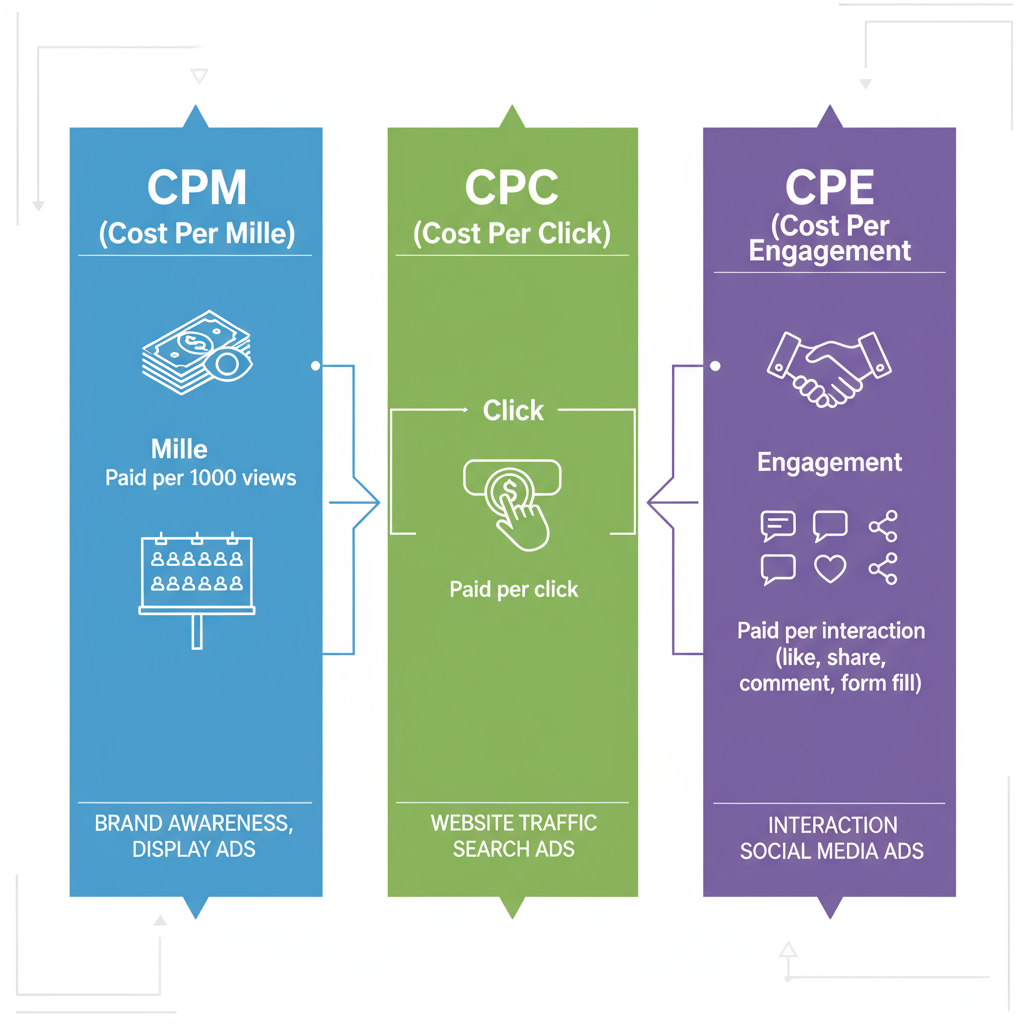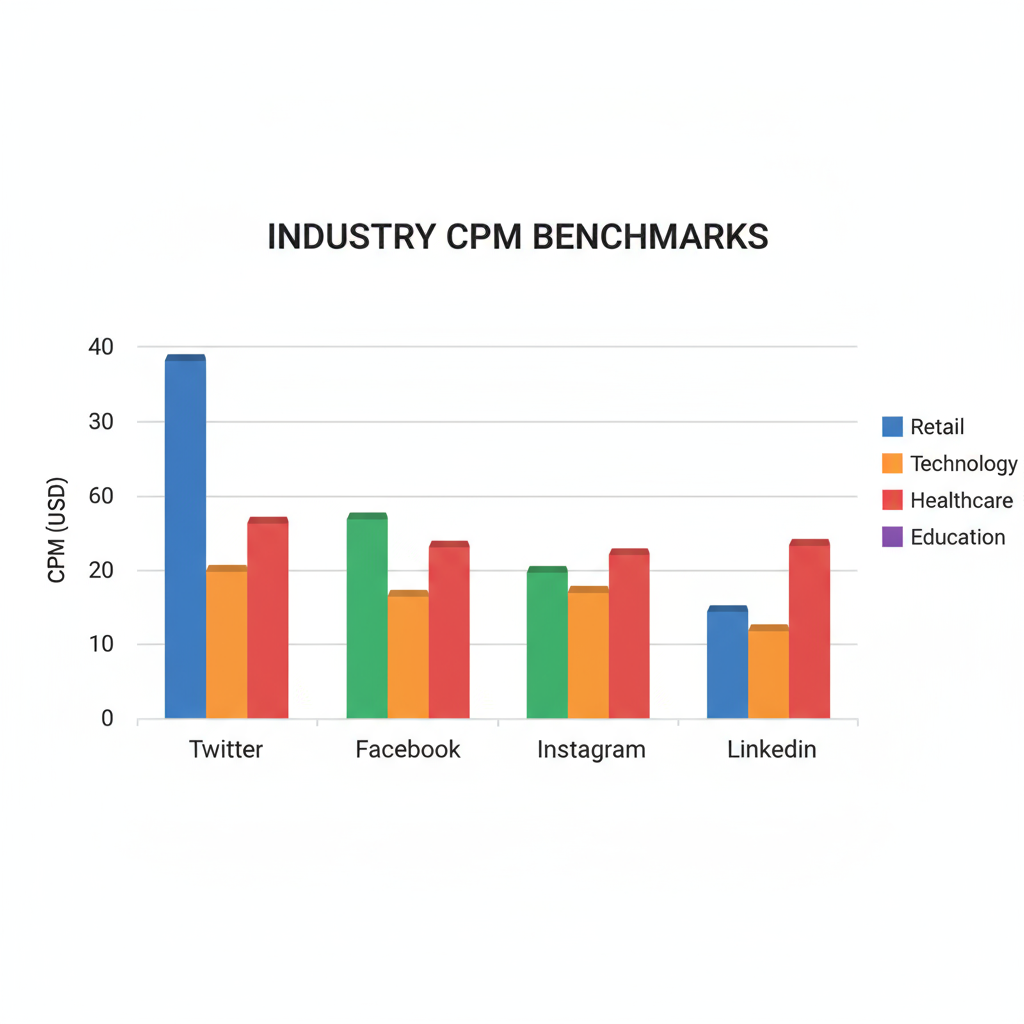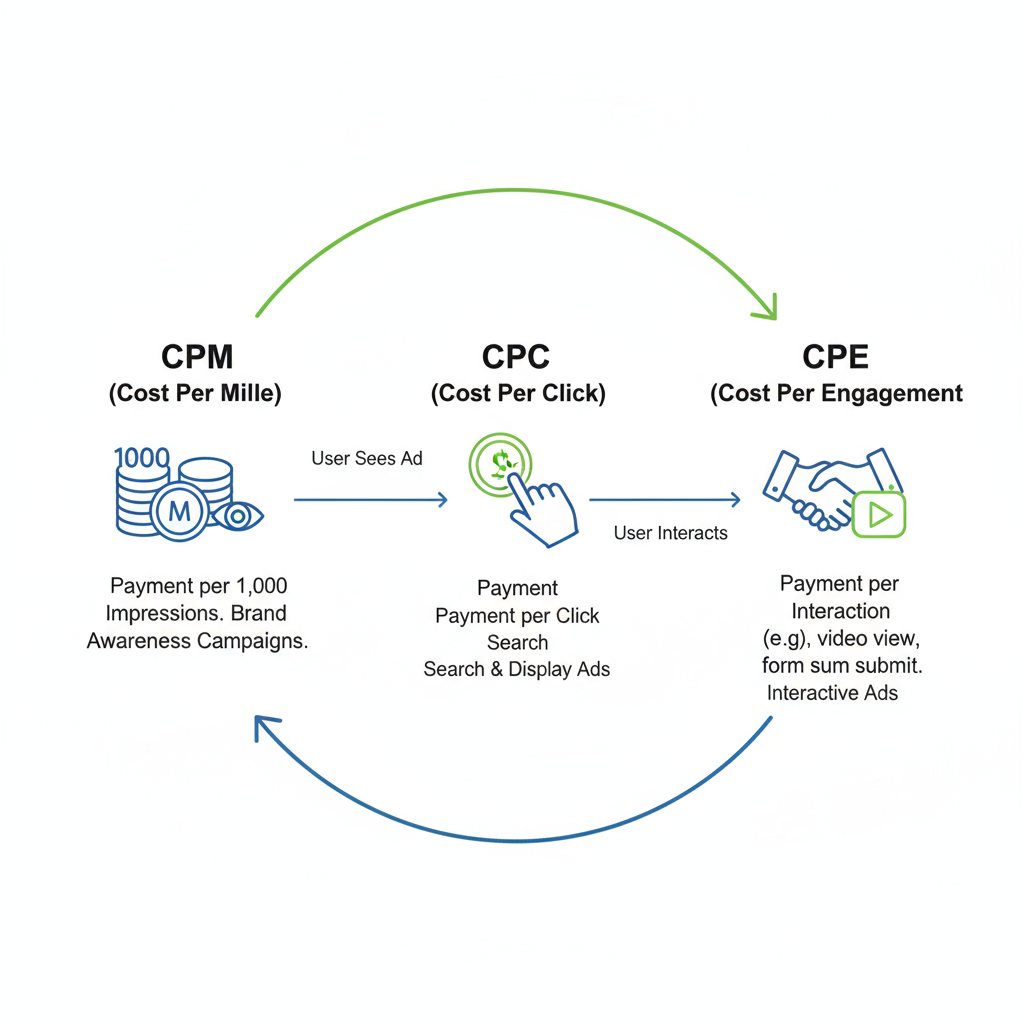CPM for Twitter Ads: Calculation, Benchmarks, and Tips
Learn how to calculate Twitter Ads CPM, compare industry benchmarks, and apply optimization strategies to reduce costs and boost campaign reach.

CPM for Twitter Ads: Calculation, Benchmarks, and Optimization Strategies
Cost Per Mille (CPM)—the cost per thousand impressions—is a cornerstone metric in social media advertising, especially for awareness-driven campaigns. Understanding CPM for Twitter Ads helps marketers forecast reach, compare performance across platforms, and refine ad strategies for better ROI.
This guide explains CPM’s meaning, Twitter-specific calculation methods, average benchmarks, and proven optimization tactics, plus comparisons with CPC and CPE bidding to help you choose the right approach.

---
Understanding CPM in Digital Advertising
CPM represents how much you pay to deliver one thousand ad impressions on a given platform. Its value lies in:
- Visibility measurement: Quantifies exposure rather than actions.
- Budget forecasting: Enables accurate reach estimates.
- Cross-platform analysis: Facilitates comparison of audience costs and ad formats.
For brand-building efforts, CPM is prioritized over click-based metrics to maximize audience exposure even when direct engagement is secondary.
---
Twitter Ads Overview: Goals and Formats
Twitter’s advertising platform supports a variety of campaign objectives, including:
- Reach
- Engagement
- Website clicks
- App installs
- Video views

Your chosen objective influences bidding—campaigns optimized for reach often focus on CPM, while traffic-based goals lean towards CPC or CPE. Twitter’s flexibility allows marketers to align budgets with intended outcomes.
---
Calculating CPM on Twitter
The CPM formula on Twitter is straightforward:
CPM = (Total Cost / Total Impressions) × 1000Example: Spend $500 for 200,000 impressions:
CPM = ($500 / 200,000) × 1000
CPM = $2.50Twitter Ads Manager automatically displays CPM metrics, making tracking and analysis seamless.
---
Key Factors Affecting Twitter CPM
Several variables influence CPM levels:
- Audience Size: Smaller, niche groups may cost more to reach.
- Targeting Precision: Highly customized targeting increases bid competition.
- Ad Format: Video tends to be pricier than static images or text.
- Seasonal Demand: Costs can surge during holidays or major events.
- Bid Competition: More advertisers targeting similar demographics raises CPM.
Identifying these drivers helps advertisers manage expectations and budget smarter.
---
Industry CPM Benchmarks Across Platforms
Here’s how Twitter CPM compares to other major platforms by recent industry data:
| Platform | Average CPM (USD) | Notes |
|---|---|---|
| $6 – $8 | Varies by targeting and format | |
| $8 – $12 | High competition in most niches | |
| $10 – $15 | Visually-driven campaigns | |
| $20 – $30 | B2B focus and premium audiences | |
| TikTok | $5 – $7 | Lower competition in certain verticals |
Twitter often offers competitive CPMs for real-time dialogue and trending topics.
---
CPM vs CPC vs CPE: Selecting the Right Model
CPM (Cost Per Mille)
Pros:
- Predictable audience reach
- Ideal for awareness-based campaigns
- Cons:
- No guaranteed engagement or conversions
CPC (Cost Per Click)
Pros:
- Payment based on traffic delivered
- Cons:
- Reach uncertain
CPE (Cost Per Engagement)
Pros:
- Focused on measurable interactions
- Effective for brand storytelling
- Cons:
- Can be more expensive if engagement rates are low
Match bidding models to your campaign’s desired outcomes.
---
Strategies to Lower CPM on Twitter
Practical tactics to keep CPM competitive:
- Broaden targeting to reduce overly narrow audience competition.
- Test multiple ad formats—different creatives or media types can yield better CPM.
- Adjust timing to avoid high-demand bidding windows.
- Explore automated bidding so Twitter’s algorithm optimizes for cost efficiency.
---
Creative Quality: The Engagement-Cost Connection
Creative excellence enhances engagement, which can reduce CPM through higher algorithmic preference.

Best practices include:
- Eye-catching visuals or thumbnails
- Clear, concise copy with strong CTAs
- Use of relevant hashtags and trending topics
Ads that outperform engagement benchmarks often enjoy lower CPM bids.
---
Conducting A/B Tests for CPM Optimization
A/B testing is essential to refining ad costs:
- Create variations in headlines, images, and calls-to-action.
- Run campaigns simultaneously for consistent conditions.
- Allocate identical budgets to each variant.
- Track CPM changes alongside engagement quality.
---
CPM Tracking in Analytics Tools
For deeper insights, combine Twitter Ads Manager with third-party solutions:
- Google Analytics for click tracking and attribution modelling
- Sprout Social for social campaign metrics
- Hootsuite Ads for multi-platform CPM comparisons
Regularly track CPM trends and note fluctuations linked to creative or targeting changes.
---
Case Study: CPM Drop and Reach Boost
A US-based fitness brand ran a month-long awareness campaign targeting active lifestyles.
- Initial CPM: $7.50
- Adjustments: Broadened keyword targeting, refreshed visuals weekly
- Final CPM: $5.80
- Outcome: 28% more impressions at the same budget
This illustrates the effect of targeted creative refresh and slight audience expansion.
---
Mistakes That Inflate CPM
Avoid these common pitfalls:
- Over-targeting too narrowly
- Running outdated creative
- Ignoring seasonal demand shifts
- Not testing varied ad formats
- Maintaining underperforming campaigns too long
---
Recommendations for CPM Efficiency
To succeed with CPM for Twitter Ads:
- Set clear objectives—best for reach and awareness goals
- Benchmark regularly—compare performance with industry averages
- Keep optimizing—refresh creative, test targeting, tweak bids
- Monitor analytics to detect upward CPM trends early
- Balance reach and relevance—avoid too broad targeting that dilutes engagement
---
Summary
Mastering CPM in Twitter Ads requires aligning objectives with bidding strategies, diligently testing creative, and tracking metrics over time. Applying these optimisation methods helps reduce costs while maintaining reach.
Start refining your Twitter Ads today—experiment with targeting and creative updates to achieve the lowest possible CPM without sacrificing quality impressions.




